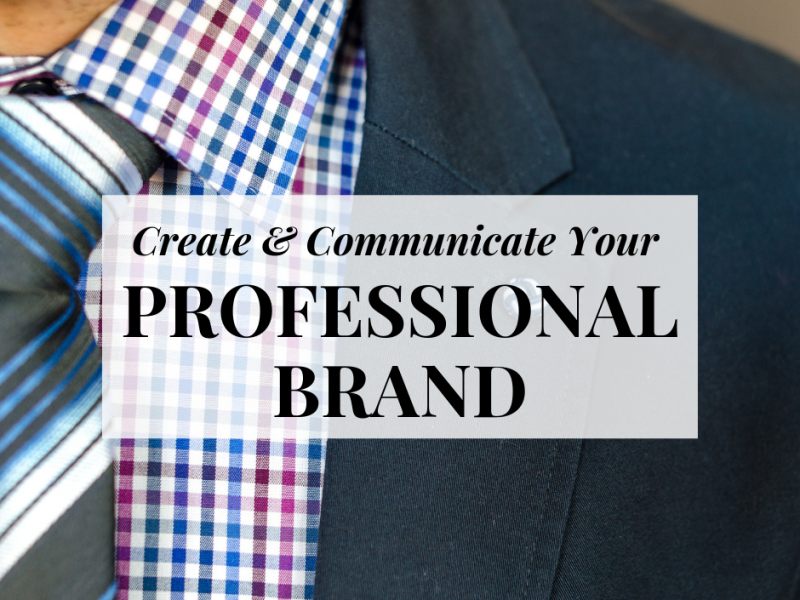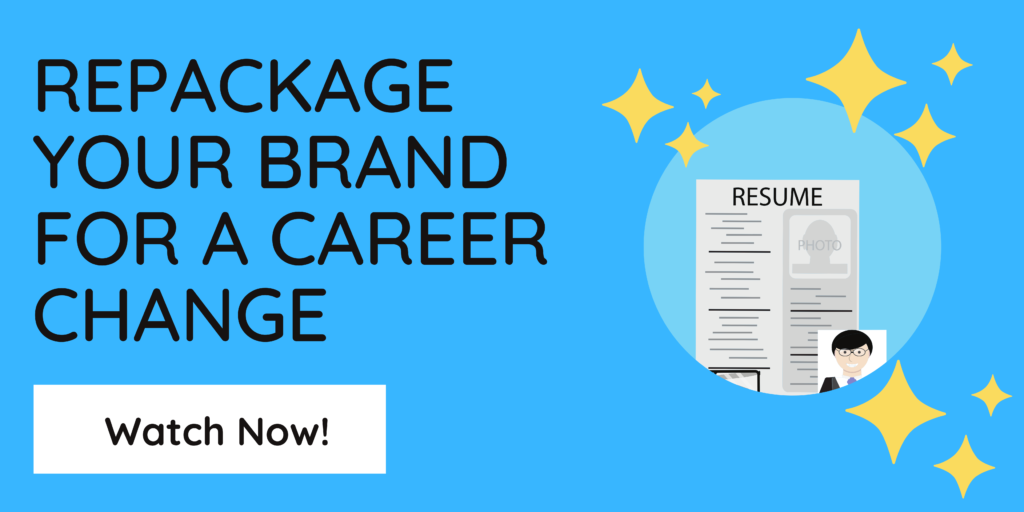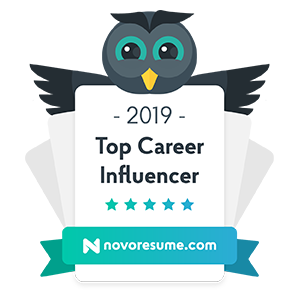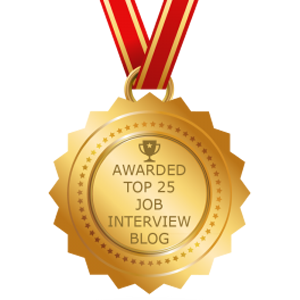Branding is an important part of finding and landing a new job. Your professional brand helps hiring managers and recruiters understand fit potential for their job openings. Your brand also provides insight into whether or not you are a cultural fit for the organization. Without a strong brand, you will experience difficulty landing a job. In this post we’ll define professional branding and explain how and where to brand yourself in order to optimize your job search.
What is Professional Branding?
Branding is the way you differentiate yourself from other people around you. Professional branding is how you differentiate yourself in a professional capacity. Your professional brand should communicate who you are, what you do, and how you do it. Your brand should be communicated instantly when interacting with other professionals. Branding is important for career management and should be incorporated throughout your critical branding materials. Branding is also a huge part of experiencing job search results.
Why Professional Branding is Important for Landing a Job
Professional branding is important for landing a job because it forms the first impression for hiring managers. When done correctly, branding should speak initially to your fit for the role. Branding should also speak to your future value as an employee. These branding messages help form the decisions of those who might want to hire or work with you.
The Wrong Branding Won’t Land You Interviews
If you are branded correctly and applying for the right jobs, you will have a very good chance of landing interviews. If you are not branded correctly and applying for the right jobs, you will have a very good chance of NOT landing interviews. So it’s important to realize that without optimal branding, you won’t land interviews, even if you’re a fit. Hiring managers spend very little time reading resumes. Your branding has to capture their attention in under 6 seconds. If you’re not landing interviews, the problem is probably in your branding.
When to Focus on Creating Your Professional Brand
Professional branding is not about hiding under a rock until you’re ready to apply for a new job. Most professionals I meet don’t spend enough time on their branding. It’s very common for professionals to stick with the same resume or branding statements they’ve always used. This is a big mistake. Branding should evolve as your career evolves. At a minimum branding should be updated with every career move. The more time you put into maintaining your brand, the easier branding tweaks will be when branding becomes a necessity.
I was feeling dragged out and depressed – my job search was going in circles with no clear resolution.Every time before I talk to you I wonder whether it will get anywhere, and then the next day I really just feel energized and on the right track. Thank you for that. Thanks again for making me feel like this isn’t some insurmountable hurdle but rather a series of manageable steps. – Christine, Career Re-entry Exec, Job Search Jumpstarter Client
Branding is Important Even When You’re Not in the Job Search
If you are not looking to make a career move you still need to spend some time focusing on your brand. Even if you are happy in your current job, it pays to keep your branding current. A current brand has the potential to attract recruiters – and bring even better opportunities your way. We always used to say in recruiting, “the best time to look for a job is when you’re happy.” Things can change quickly in the corporate world and you never know when you’ll need to make a move. It’s far better to have an opportunity floated your way by a recruiter than to be scrambling for opportunities when things change.
The Best Places to Brand Yourself
Since professional branding is so important for your career, you’ll want to be sure you are taking advantage of every opportunity to brand yourself. There are 5 places where branding takes place – places where you need to have a presence.
1. LinkedIn
LinkedIn is the number one place to have a branded presence. Being branded on LinkedIn is even more important for your career than your resume. 100% of recruiters and hiring managers search LinkedIn for talent. One of your number one career goals is to be found in their searches. If people can’t find you on LinkedIn, then you practically don’t exist when it comes to career management. Take some time to update your LinkedIn profile so you are appearing in searches. Also take some time to apply brand strategy to several key LinkedIn profile parts such as the headline and summary. Once people find your profile, you will need your strategic branding to do the selling. This is the role of the LinkedIn profile parts – to position your brand properly for the recruiters and opportunities you are trying to attract.
2. Resume
Your resume branding is important for when you send applications. You’ll only get a few seconds to capture hiring manager attention. You are also competing against keyword-scanning ATS’s. Finally, if your resume does make it past the ATS and hiring manager, it will be circulated to others on the team. Your resume will be the first impression you make on key decision makers. Therefore you will want to include the strongest keywords, skills and branding statements. You will want to avoid designer online resume services for these reasons. While visually stunning, your resume will be lacking in brand substance (best keywords, skills, phrases, etc.). If you are not sure how to do this, I recommend working with a professional resume writer. This will save you a lot of time, hassle, and branding confusion.
3. Cover Letter
Your cover letter, while not as important as the resume or Linkedin profile, will also provide an opportunity for strategic branding. Cover letter branding should be visually cohesive with your resume. However the content, should be complimentary, not duplicitous to the resume. The cover letter is where you want to feature your 3 strongest and most relevant results. Avoid copy-pasting from your resume. Take some time to write compelling branding statements that will introduce all your great career accomplishments.
4. Networking
Unlike written branding, networking is a venue for in-person branding. Networking is one of the most effective job search activities. Therefore you will want to take time to craft all of your networking branding pieces. Your elevator pitch is the foundation for your branding. Craft several branding statements to weave into your networking conversations. Don’t be afraid to borrow from your Linkedin or resume – repurposing statements for oral communications.
5. Interviewing
The other critical venue for in-person branding is the job interview. You will need to be able to brand yourself in a conversational way during the interview. If you have spent time networking and honing your networking branding, interview branding should be a breeze!
How to Get Started With Your Professional Branding
Your LinkedIn profile is the best place to start your branding. It’s the most visible place and it’s also more of a casual medium for branding than the resume. This should help your branding creative juices to start flowing. I recommend starting with the photo and headline. Then work your way down the profile to the Linkedin summary. Finish the profile off by adding your work history or experience.
“I received my rebrand strategy from the best in industry. It has been a unique and true pleasure collaborating with NG Career Strategy. I am impressed with your team’s passion and dedication in professional branding. With my brand makeover, I feel more confident engaging on LinkedIn and boosting my connections.” – Michelle, Diversity & Inclusion Executive & The Works client
How to Analyze Your LinkedIn Branding and Make Sure it’s On Point
Once you complete your initial LinkedIn branding, make sure it conveys your brand correctly. Ask yourself: What message is my professional brand communicating to outside viewers? Be completely honest with yourself. If it feels too cheesy or too rigid, it may not be the right branding. Perhaps your profile is coming off a little too conservative and polished? Or maybe you are showing too much personality? Or appearing overly casual when you should be conveying more leadership presence? Your brand should feel authentic to you. If you are having a hard time branding to authentic you, recruit the help of a friend or colleague who you can trust to be totally honest. Ask for their opinion. Spend 15 minutes brainstorming better words or concepts. This is always easier with an extra set of eyes.
Brand Yourself to Future You
After you’ve taken the time to fix your brand vibe, take your branding one step further. This is where you will cross over from branding to strategic branding. If you are in the job search, your want to be found for your next job – so you need to look the part. You need to brand yourself to future you. Take a moment to identify which vibe you should be communicating based on your next career target. If your goal is to advance in your current industry, check out the Linkedin profiles of those currently working in your target next role. What do the impressive profiles look like? What information do they include?
How to Brand Yourself for a Career Change
If your goal is to transition into a totally new industry, does your profile speak to your new future target or are you still stuck on your past brand (potentially causing confusion to viewers)? There are ways to speak vaguely or make minor tweaks, so that you don’t scream out “I’m looking for a new job” to your current employer. For example if you’re looking to move from the finance industry into healthcare, weave in any transferable skills. Mention healthcare as relevant to your experience. This will help you to be picked up in recruiter searches for “healthcare” and make you appear as more of a fit than if your future role branding is not presented.
Make Annual Branding Updates to Keep Your Profile Current
Once your initial branding is completed, plan to revisit in a year, if not sooner. Make annual updates to your profile so that your chance of being connected to the right people for the right opportunities or goals is achieved. Your professional brand must be continually refreshed so that you appear to be making progress in your career.



 Leverage Your LinkedIn Photo to Attract More Job Leads
Leverage Your LinkedIn Photo to Attract More Job Leads


